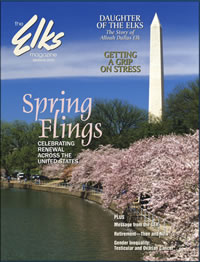USPS Creating Winners and Losers in Periodicals
Alliance Report
March 19, 2015–
Price Changes Range from -8% to +16%
Several Nonprofit Publications Are Threatened
The current CPI-based rate increase case (R2015-4) has unexpectedly turned into a roadside bomb for Periodicals, with the mail class experiencing the widest range of price changes in years. Some of the largest increases will fall upon nonprofit publications, including such iconic titles as Consumer Reports, National Wildlife, Elks Magazine, Ranger Rick, Guideposts, On Health, Money Adviser, and others. These publications, which are relatively lightweight and have little or no advertising content, face postage cost increases of as much as 16 percent – almost eight times the increase of the CPI cap. Meanwhile, other publications will enjoy significant reductions in postage costs of as much as eight percent.
Even worse, the USPS sprang this 24 percentage point spread in rate changes on its Periodical Mail customers with no warning and little explanation. In fact, over a month passed after the USPS rate filing before the USPS disclosed enough information to allow Periodicals customers and their mail service providers even to calculate the percentage price increase for individual titles. Reshuffling the Periodicals rate structure so extensively, with essentially no advance warning to publishers who would be hurt by the changes, is no way to treat some of the Postal Service’s oldest customers.
Periodicals have been a mainstay of the mail system since the founding of the United States. Nationwide distribution of publications has been one of the primary ways that the Postal Service, and before it the Post Office Department, has fulfilled its mission to “bind the nation together.” Periodicals distribution was one of the main reasons the founding fathers established the U.S. Post office as a core element of a free, self-governing society. Indeed, the Postmaster General was a member of the President’s cabinet until 1970.
In today’s world, Periodicals are still the “anchor of the mailbox.” They are called this because publications are one of the few kinds of mail that recipients voluntarily pay to receive. Households pay for publications through subscriptions and membership in organizations that they support, believe in, and seek advice and help from. People look forward to receiving their weekly or monthly magazines, their newspapers, and their newsletters. With the decline of other traditionally important kinds of mail such as bills, statements, checks, and personal letters, Periodicals remain as one of the strongest inducements for consumers to open their mailboxes and read what is inside.
Periodicals also are one of the strongest remaining reasons to continue a government owned and operated monopoly public service. Without magazines, newspapers, and newsletters, how strong is the remaining public policy justification for continuing government mail delivery service? And if the Postal Service wants to continue the growth of its package delivery service, the supposed salvation of the mail system, how can the Postal Service compete without a vibrant mail delivery business that helps to pay for the parcel delivery network? The loss of mail would diminish the economies of scale and scope that enable the USPS to compete for packages with United Parcel Service, Federal Express, and a host of new entrants in the highly competitive market for package delivery.
An Unforced Error
Some have suggested that the disruption in the Periodicals Mail rate design was required to comply with a Commission directive to make the Periodicals Mail rate structure more efficient. Not so for two reasons. While the Commission has encouraged rate design changes that promote efficiency, it also recognizes that changes in rate structure should not be imposed overnight, without considering their potential for rate shock. Additionally, much of the rate shock for nonprofit publications is due to the disparate rate changes proposed for pound rate elements (which USPS proposes reducing by about 20 percent) and piece rate elements (for which USPS proposes postage increases), not by rate structure changes aimed at enhancing efficiency, such as establishing Flats Sequencing System (FSS) rates and increasing container and bundle rates. In this way, the Postal Service’s rate design choices exacerbated rate shock, rather than mitigating it.
The Postal Service could, and should, have proposed rates that promote efficiency while avoiding rate shock. The USPS certainly could have calculated the effect of the proposed price changes on individual titles, as the Postal Service has done many times in past cases. The difference this time is that the Postal Service apparently decided not to confine the range of rate changes within a band of about 4 percentage points, as in past cases, but to take a “let ‘em eat cake” approach to the results of the rate redesign.
Remand Presents a Chance to Reduce Rate Shock
Yesterday, the PRC remanded Periodicals, Standard Mail and Package Services rates back to the Postal Service for more corrections and explanations unrelated to rate shock. Nevertheless, with the remand necessarily requiring a delay in implementation beyond April 26, it presents an outstanding opportunity for new Postmaster General Megan Brennan and the Board of Governors to correct the extreme rate shock that will further drive publications out of the mail. It would be a very intelligent and wise decision to help ensure the continuing near-term recovery of the Postal Service as well as the kind of long-term success that Postmaster General Brennan has articulated as her primary goal. The Alliance of Nonprofit Mailers strongly urges the Postal Service to do the right thing and fix the extreme price increases facing critically important nonprofit publications.
(c) 2015 Alliance of Nonprofit Mailers



